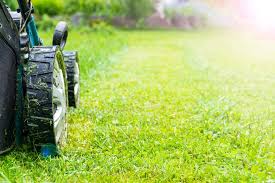Essential Aspects of Lawn Care
2024-07-29
Lawn care involves a range of activities aimed at maintaining and improving the health, appearance, and functionality of your lawn. Proper lawn care ensures a lush, green, and healthy lawn, which enhances the aesthetic appeal of your outdoor space and contributes to environmental health. Here’s an overview of essential aspects of lawn care:
1. Mowing:
- Frequency: Regular mowing helps maintain a neat appearance and encourages healthy growth. Mow your lawn when the grass reaches about one-third higher than the recommended cutting height.
- Height: Adjust the mower height according to grass type. For most grasses, keep it between 2.5 to 4 inches.
- Technique: Mow in different directions each time to prevent grass from developing a grain and to ensure even growth.
2. Watering:
- Amount: Lawns typically need about 1 to 1.5 inches of water per week, including rainfall. Water deeply and less frequently to encourage deep root growth.
- Timing: Water early in the morning or late in the evening to reduce evaporation and fungal diseases.
- Method: Use a sprinkler system, soaker hoses, or irrigation systems to ensure even distribution.
3. Fertilizing:
- Type: Use balanced fertilizers with the appropriate N-P-K ratio (Nitrogen, Phosphorus, Potassium) for your grass type and soil condition.
- Timing: Apply fertilizer in spring and fall for cool-season grasses, and in late spring and summer for warm-season grasses.
- Method: Follow the manufacturer’s instructions for application rates and methods to avoid over-fertilization.
4. Aerating:
- Purpose: Aeration improves soil health by relieving compaction, increasing air flow, and enhancing nutrient absorption.
- Method: Use a core aerator to remove plugs of soil from the lawn. Aerate in the fall for cool-season grasses and in the spring for warm-season grasses.
5. Seeding and Overseeding:
- Seeding: Plant grass seed to establish new lawns or fill in bare spots.
- Overseeding: Spread seed over existing lawns to improve density, introduce new grass varieties, and reduce weeds. Ideal times for overseeding are early fall or spring.
6. Weed Control:
- Types: Use pre-emergent herbicides to prevent weed seeds from germinating, and post-emergent herbicides to target existing weeds.
- Manual Control: Hand-pull weeds or use a weeding tool for selective removal.
- Prevention: Maintain a healthy lawn with proper mowing, watering, and fertilizing to reduce weed growth.
7. Pest and Disease Management:
- Identification: Regularly inspect your lawn for signs of pests (e.g., grubs, insects) and diseases (e.g., fungi, molds).
- Treatment: Use appropriate pesticides or fungicides as needed, following label instructions. Consider integrated pest management (IPM) strategies to minimize chemical use.
8. Thatching and Raking:
- Thatching: Remove excess thatch (a layer of dead grass and roots) to improve water and nutrient penetration. Use a dethatching rake or machine if necessary.
- Raking: Regularly rake leaves and debris to prevent suffocation of grass and to maintain a clean appearance.
9. Soil Testing:
- Purpose: Soil testing helps determine soil pH and nutrient levels, which informs your fertilization and amendment strategies.
- Method: Collect soil samples from various locations in your lawn and send them to a testing laboratory. Amend soil based on test results.
10. Edge and Border Maintenance:
- Edging: Use lawn edgers or trimmers to create clean lines along sidewalks, driveways, and garden beds.
- Borders: Maintain borders with mulch or decorative stones to define lawn areas and reduce weed encroachment.
11. Seasonal Care:
- Spring: Fertilize, overseed, and begin mowing as the grass starts growing.
- Summer: Monitor for pests, water regularly, and mow to the proper height.
- Fall: Aerate, fertilize, and prepare for winter by removing leaves and debris.
- Winter: Avoid heavy foot traffic on frozen grass and plan for spring maintenance.
Tools and Equipment:
1. Lawn Mower: For cutting grass. Can be push, self-propelled, or riding.
2. Sprinkler System: For watering. Includes stationary, oscillating, or rotating types.
3. Aerator: For relieving soil compaction.
4. Fertilizer Spreader: For even application of fertilizer.
5. Weed Killer: For controlling unwanted plants.
6. Rake: For collecting leaves and debris.
7. Edger/Trimmer: For maintaining clean edges.
Tips for Success:
1. Know Your Grass Type: Understand the specific needs of your grass variety (cool-season vs. warm-season) for optimal care.
2. Consistency: Regular maintenance tasks, like mowing and watering, contribute to a healthier lawn.
3. Adapt to Conditions: Adjust care practices based on weather, soil conditions, and lawn health.
By following these lawn care practices, you can maintain a vibrant and healthy lawn that enhances the beauty and functionality of your outdoor space.



